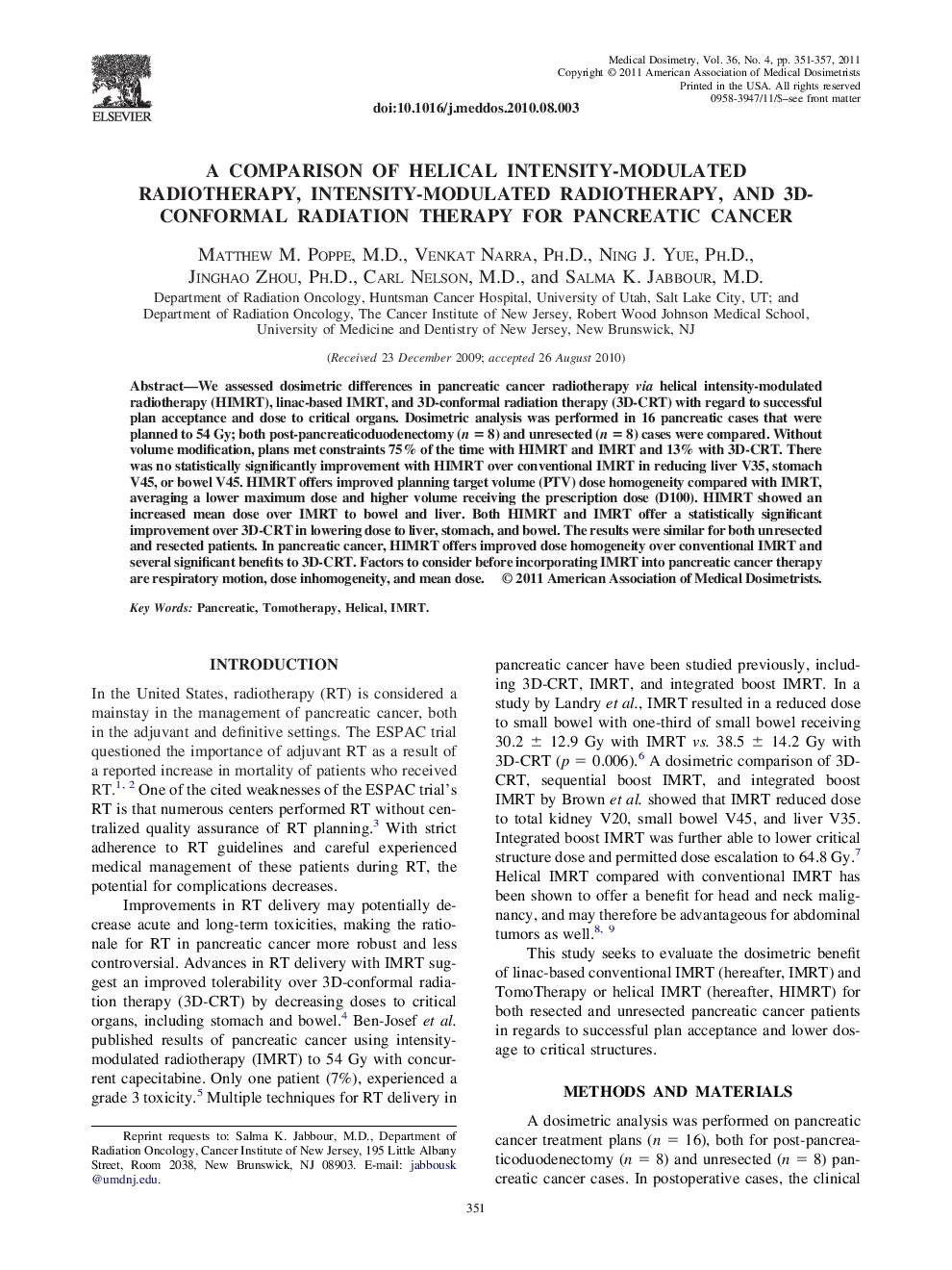| کد مقاله | کد نشریه | سال انتشار | مقاله انگلیسی | نسخه تمام متن |
|---|---|---|---|---|
| 1885169 | 1043393 | 2011 | 7 صفحه PDF | دانلود رایگان |
عنوان انگلیسی مقاله ISI
A Comparison of Helical Intensity-Modulated Radiotherapy, Intensity-Modulated Radiotherapy, and 3D-Conformal Radiation Therapy for Pancreatic Cancer
دانلود مقاله + سفارش ترجمه
دانلود مقاله ISI انگلیسی
رایگان برای ایرانیان
موضوعات مرتبط
مهندسی و علوم پایه
فیزیک و نجوم
تشعشع
پیش نمایش صفحه اول مقاله

چکیده انگلیسی
We assessed dosimetric differences in pancreatic cancer radiotherapy via helical intensity-modulated radiotherapy (HIMRT), linac-based IMRT, and 3D-conformal radiation therapy (3D-CRT) with regard to successful plan acceptance and dose to critical organs. Dosimetric analysis was performed in 16 pancreatic cases that were planned to 54 Gy; both post-pancreaticoduodenectomy (n = 8) and unresected (n = 8) cases were compared. Without volume modification, plans met constraints 75% of the time with HIMRT and IMRT and 13% with 3D-CRT. There was no statistically significantly improvement with HIMRT over conventional IMRT in reducing liver V35, stomach V45, or bowel V45. HIMRT offers improved planning target volume (PTV) dose homogeneity compared with IMRT, averaging a lower maximum dose and higher volume receiving the prescription dose (D100). HIMRT showed an increased mean dose over IMRT to bowel and liver. Both HIMRT and IMRT offer a statistically significant improvement over 3D-CRT in lowering dose to liver, stomach, and bowel. The results were similar for both unresected and resected patients. In pancreatic cancer, HIMRT offers improved dose homogeneity over conventional IMRT and several significant benefits to 3D-CRT. Factors to consider before incorporating IMRT into pancreatic cancer therapy are respiratory motion, dose inhomogeneity, and mean dose.
ناشر
Database: Elsevier - ScienceDirect (ساینس دایرکت)
Journal: Medical Dosimetry - Volume 36, Issue 4, Winter 2011, Pages 351-357
Journal: Medical Dosimetry - Volume 36, Issue 4, Winter 2011, Pages 351-357
نویسندگان
Matthew M. M.D., Venkat Ph.D., Ning J. Ph.D., Jinghao Ph.D., Carl M.D., Salma K. M.D.,